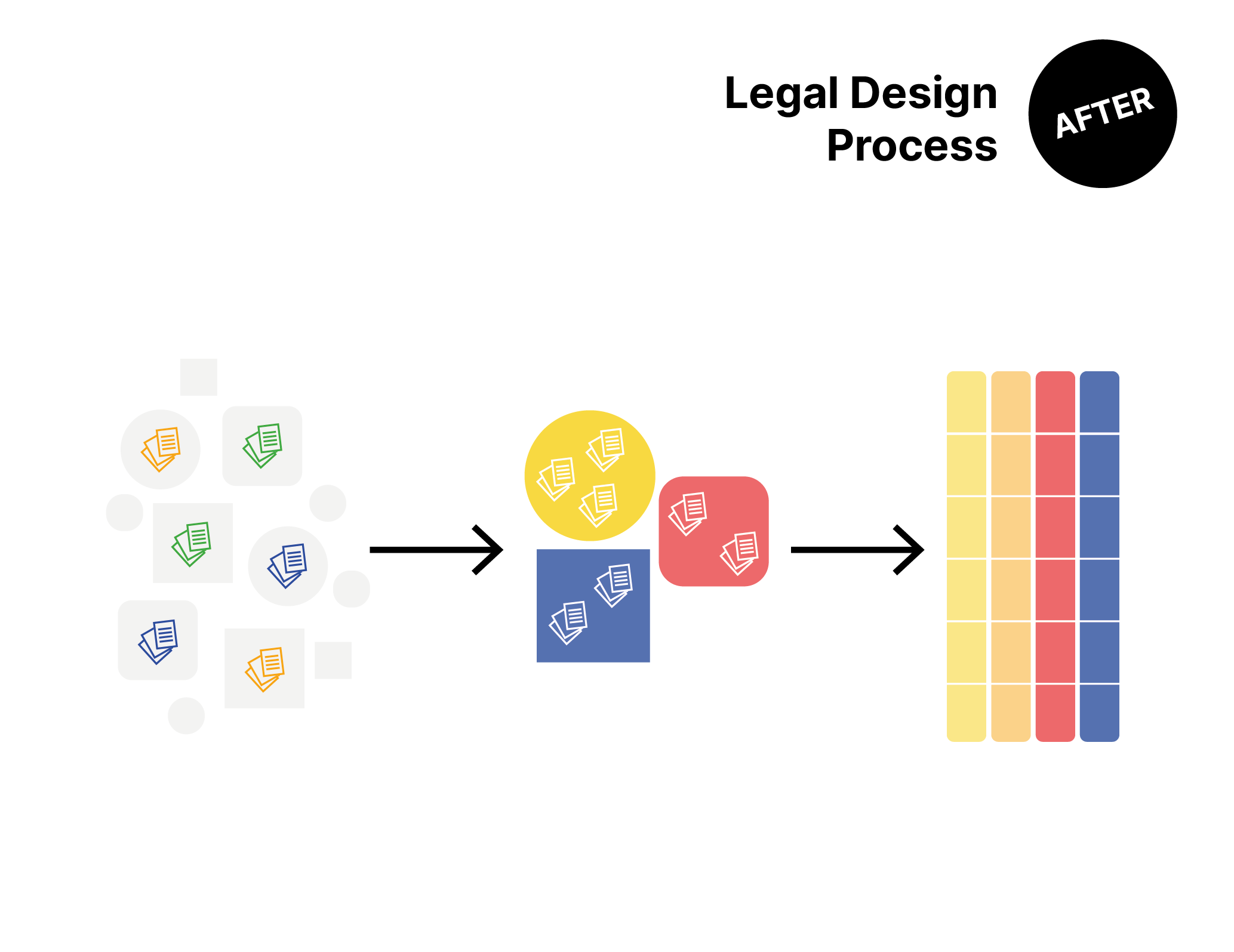The Challenge
An in-house lawyer’s responsibilities typically include drafting contracts.
Of course, such a task requires the coordination of an entire project team, usually in a sequence of activities and responsibilities. Our customer’s legal department alone had several different departments with numerous colleagues who needed to be involved – and in a large, global company, the people responsible usually don’t all know each other personally.
The payment method in the online store was to be expanded, which meant that all relevant contracts had to be coordinated and adapted. And then the usual search for information began: which colleague needed to be involved, when and where, which departments needed to give approval, and so on. In this situation, a lawyer found chaos: scattered contacts with colleagues, endless Excel spreadsheets with responsibilities in SharePoint, verbal messages and scattered information in different channels.
Another level of confusion was found in the contracting process itself. Templates were hard to find or got lost, few contacts knew exactly who was responsible for what at any given time, and consultants were frustrated because their desks were full and their to-do lists were long. We wanted to fundamentally improve this situation.
The Approach
The AK | Legal Design team approached the problem using the Legal Design method: Working closely with the contracting and legal departments involved, we analyzed, structured, and visualized the existing organizational information. There were many charts and spreadsheets, so the challenge was to identify the multitude of contacts and responsibilities and to present them in a clear and simple way. What sounds simple was actually very complex: the departments were multilayered, expertise was scattered without being consolidated in a system, and even the project managers struggled to build simple use cases and explain the existing responsibility waterfall.
In several workshops we refined the understanding of the workflow and identified all relevant stakeholders. Through collaborative discussions and the iterative legal design process, we laid the groundwork for our solution: we wanted to improve understanding through a user-friendly visualization.
We concluded that a single visualization would not be sufficient to communicate the entire workflow, as the process varies depending on the subject matter of the contract.
The key insights of our research
The contracting process has a large number of stakeholders, making it very complex to understand who is responsible for what.
The existing information landscape is hard to navigate and leads to frustration. On the other hand, legal professionals need clear, easily accessible workflow information to perform their jobs efficiently and on time.
The current onboarding processes are extremely difficult, the legal department receives way too many questions about the workflow, which leads to frustration and too much time spent answering and guiding new colleagues.
The lack of clear guidance on what to do, which templates and documents to use, and who to involve puts the legal organization at serious risk of knowledge loss due to high staff turnover.
The Solution
The design process resulted in several visualizations of the contract creation workflow.
First, there’s now a comprehensive matrix chart that lists the process steps on one side and all the departments involved in the contract process on the other. For easy identification, the departments are color-coded.
In addition, we have developed two typical use cases. We have visualized them according to the above scheme. We also developed an interactive, digital, clickable version of typical use cases that users can navigate during the contracting process.
And, the related templates and documents required to close a contract are now directly linked and easily accessible through the company’s intranet, ensuring that all team members can quickly find the information they need without having to navigate through multiple platforms or documents.
Step 1
Analysis and restructuring of information


Move the slider to view before & after
Step 2
Team Structure


Move the slider to view before & after
Step 3
Contracting process


Move the slider to view before & after
The Benefits
Our solutions have streamlined the communication and collaboration process within the legal department, reducing frustration and improving the efficiency of contract-related tasks and projects.
The bottom line
When dealing with complex systems, content, and multiple interactions, leverage the power of visualization.
Not only will it help you spot inconsistencies during the redesign process, but it will also prepare the organization for a clear and logical structure as a foundation for digitization, workflow streamlining, and ultimately automation.

